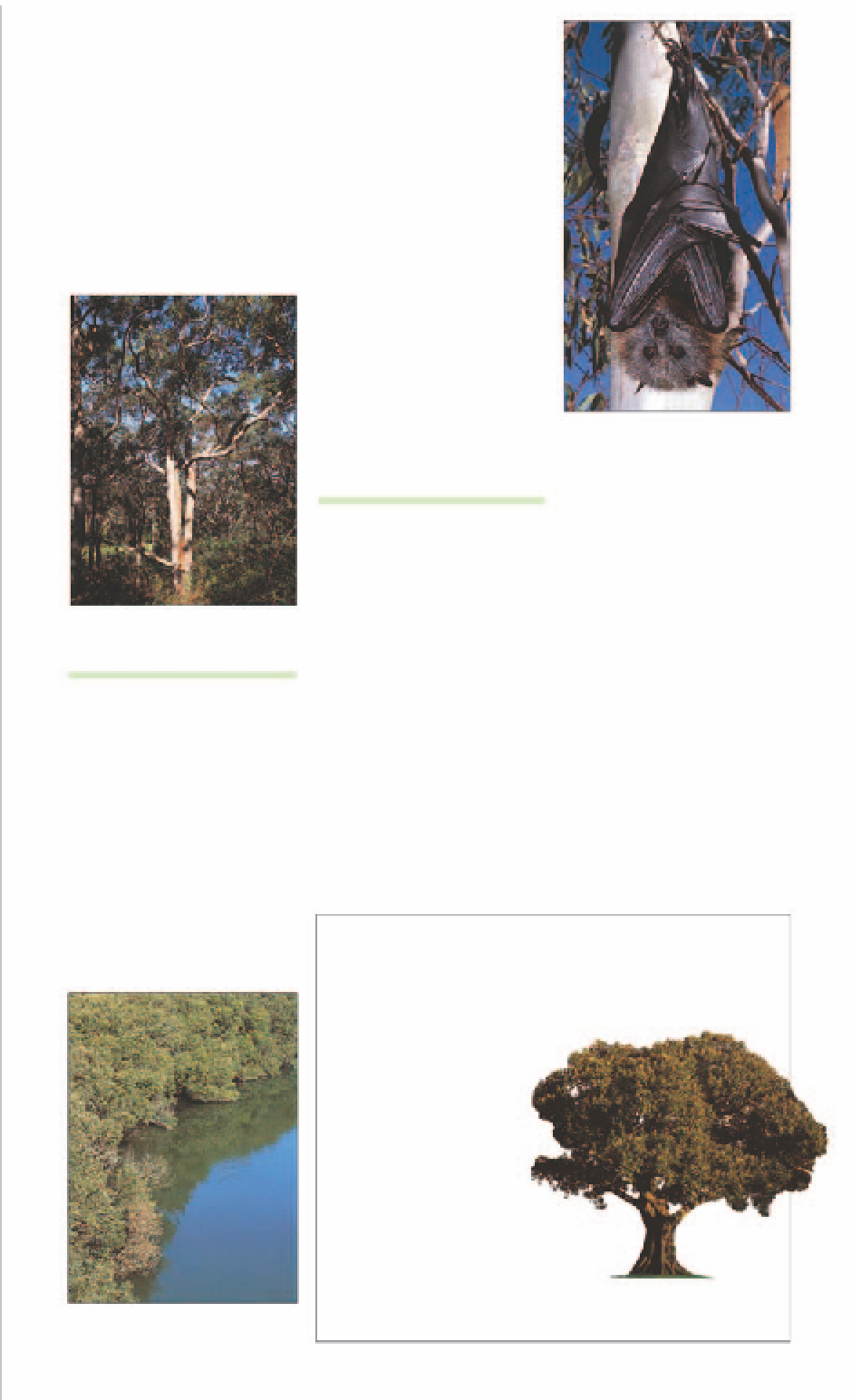Travel Reference
In-Depth Information
become small, brownish-grey
moths and are commonly seen
in eucalypt or gum forests.
Grass trees
(Xanthorrhoea
species), also common in open
eucalypt forest, are an ancient
plant species with a tall spike
that bears white flowers in
spring. Lyrebirds, echidnas,
currawongs and black snakes
are predominant wildlife. The
snakes, although beautiful,
should be treated with caution.
is no fresh water and, unlike
soil, the mud has no oxygen
whatsoever below the very
surface level. Mangroves have
developed some fascinating
ways around these problems.
First, excess salt is excreted
from their leaves. Secondly,
they get oxygen to the roots
by pushing special peg-like
roots, called pneumatophores,
into the air. At low tide, these
can be clearly seen around the
base of most mangroves. They
allow air to diffuse down into
the roots so that they can sur-
vive the stifling conditions
under the mud. The Sydney
rock oyster
(Saccostrea com-
mercialis
), a popular local
delicacy, is found in mangrove
areas, particularly around the
Hawkesbury and Botany Bay.
The nocturnal grey-headed flying
fox, at rest during the daytime
a temporary colony of these
mammals in the Botanic Gar-
dens, where they hang upside
down from trees in the park.
Most of Sydney's flying foxes
come from a large colony in
Gordon, in the city's north.
Moore Park and The Domain
are good places to spot flying
foxes and they also have won-
derful specimens of Moreton
Bay and other fig species.
While paperbarks
(Melaleuca
species) are a feature of Cen-
tennial Park, a range of palms
can be seen in the Botanic
Gardens. The exquisite superb
fairy-wren
(Malurus cyaneus
)
can also be seen here, flitting
between shrubs, while over-
head honeyeaters dart after
each other in the tree canopy.
CITY PARKS
An amazing number of birds
and animals make the city
parks their home. Silver gulls
(Larus novaehollandiae
) and
sulphur-crested cockatoos
(Cacatua galerita
) are frequent
daytime visitors to Hyde Park,
Centennial Park, The Domain
and the Botanic Gardens.
After dark, brush-tailed pos-
sums
(Trichosurus vulpecula
)
go in search of food and may
be seen scavenging in rubbish
bins. Also a night creature, the
fruit-eating grey-headed flying
fox
(Pteropus poliocephalus
)
can be seen swooping through
the trees. There is sometimes
A smooth-barked apple gum in
Lane Cove National Park
WETLANDS
More than 60 per cent of New
South Wales' coastal wetlands
have been lost. This makes
the remaining areas of
wetland especially important.
Most of Sydney's wetlands are
mangrove swamps, with some
of the best-preserved examples
at Bicentennial Park and the
North Arm Walking Track.
Mangrove swamps are one
of the most hostile places for
a plant or animal to live. There
STRANGLER FIGS
The majestic figs in the city parks hide a dark secret. While
most of the Moreton Bay figs
(Ficus macrophylla
) you see
have been grown by gardeners long past, in the wild these
trees have a different approach. They start
as a tiny seedling, sprouted
from a seed dropped by
a bird in the fork of a
tree. Over decades, the
pencil-thin roots grow
downwards. Once they
reach the ground, new
roots are sent down,
forming a lacy network
around the trunk of the host
tree. They eventually become
an iron-hard cage around the host
tree's trunk so that it dies and
rots away, leaving the fig
with a hollow trunk.
The Moreton Bay fig, with its
massive spreading canopy
A grey mangrove swamp near the
Lane Cove National Park




































